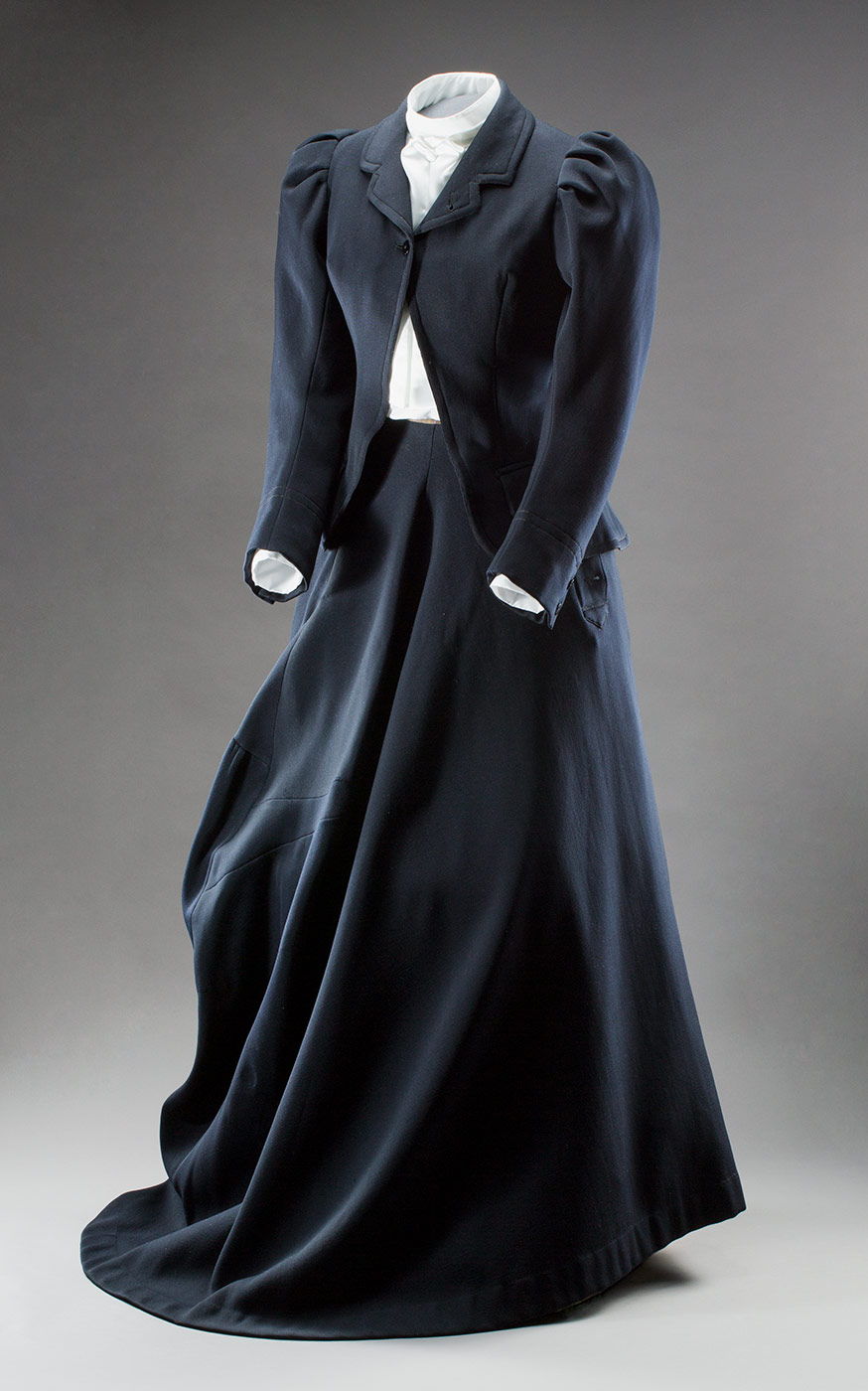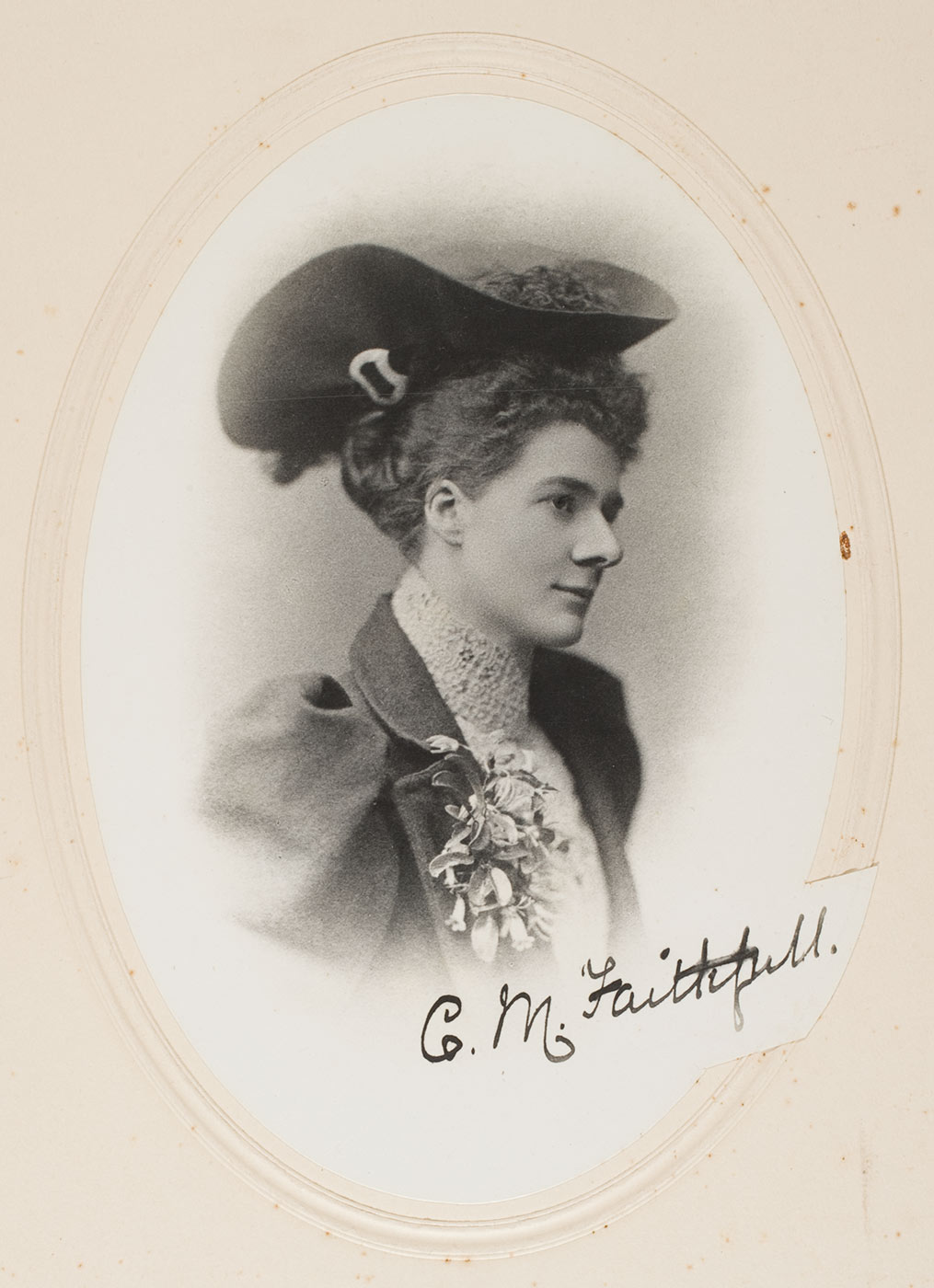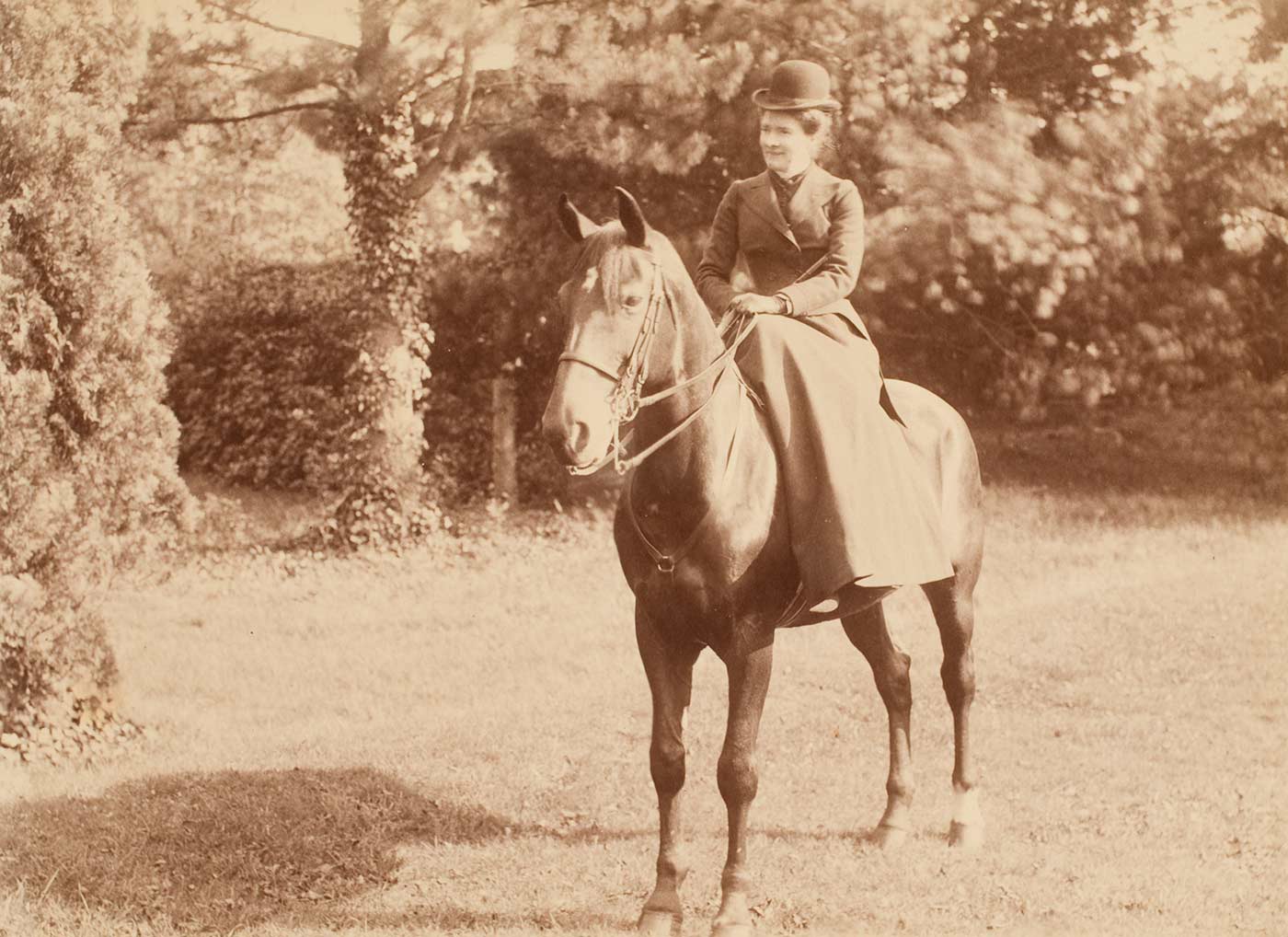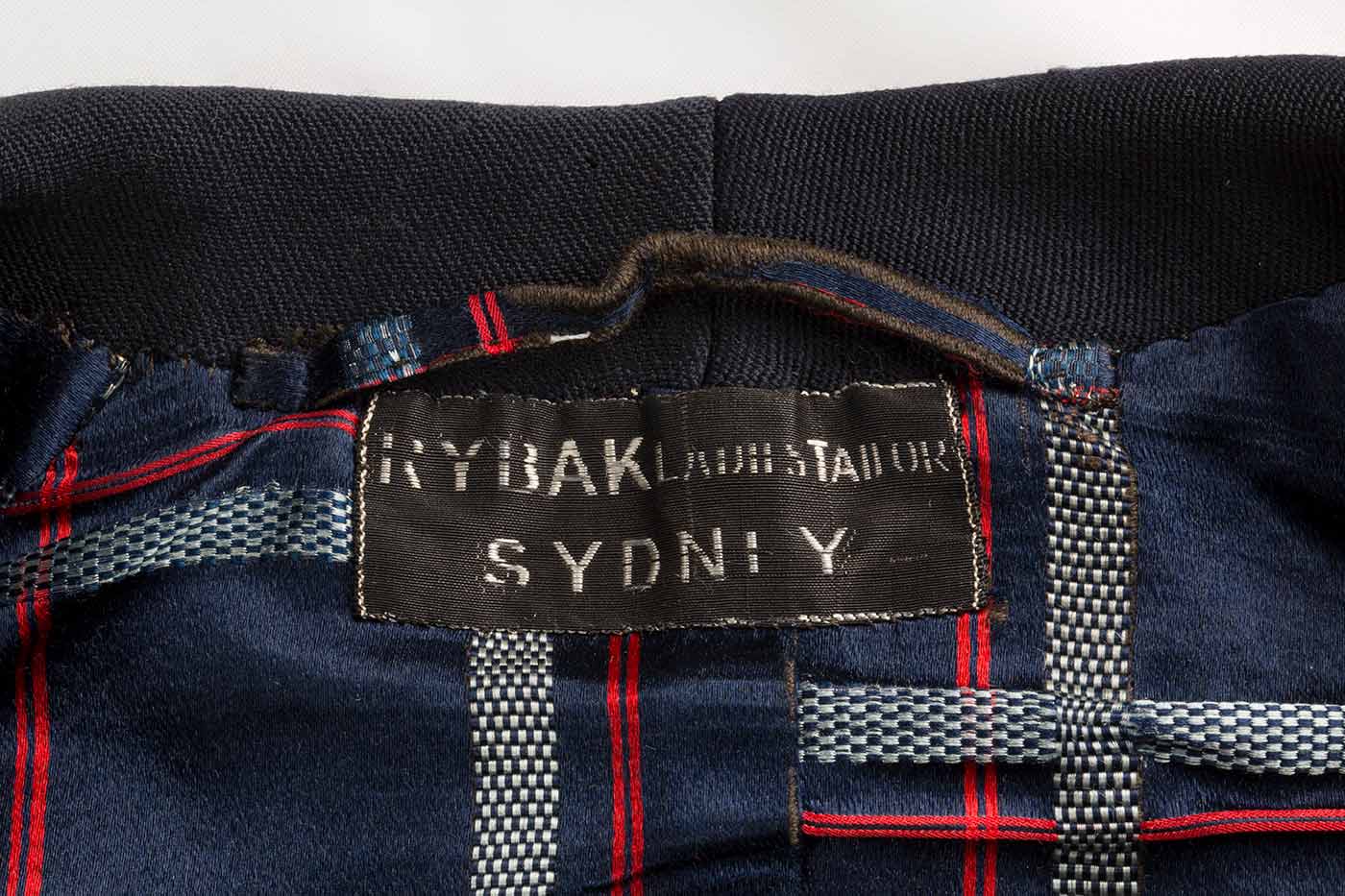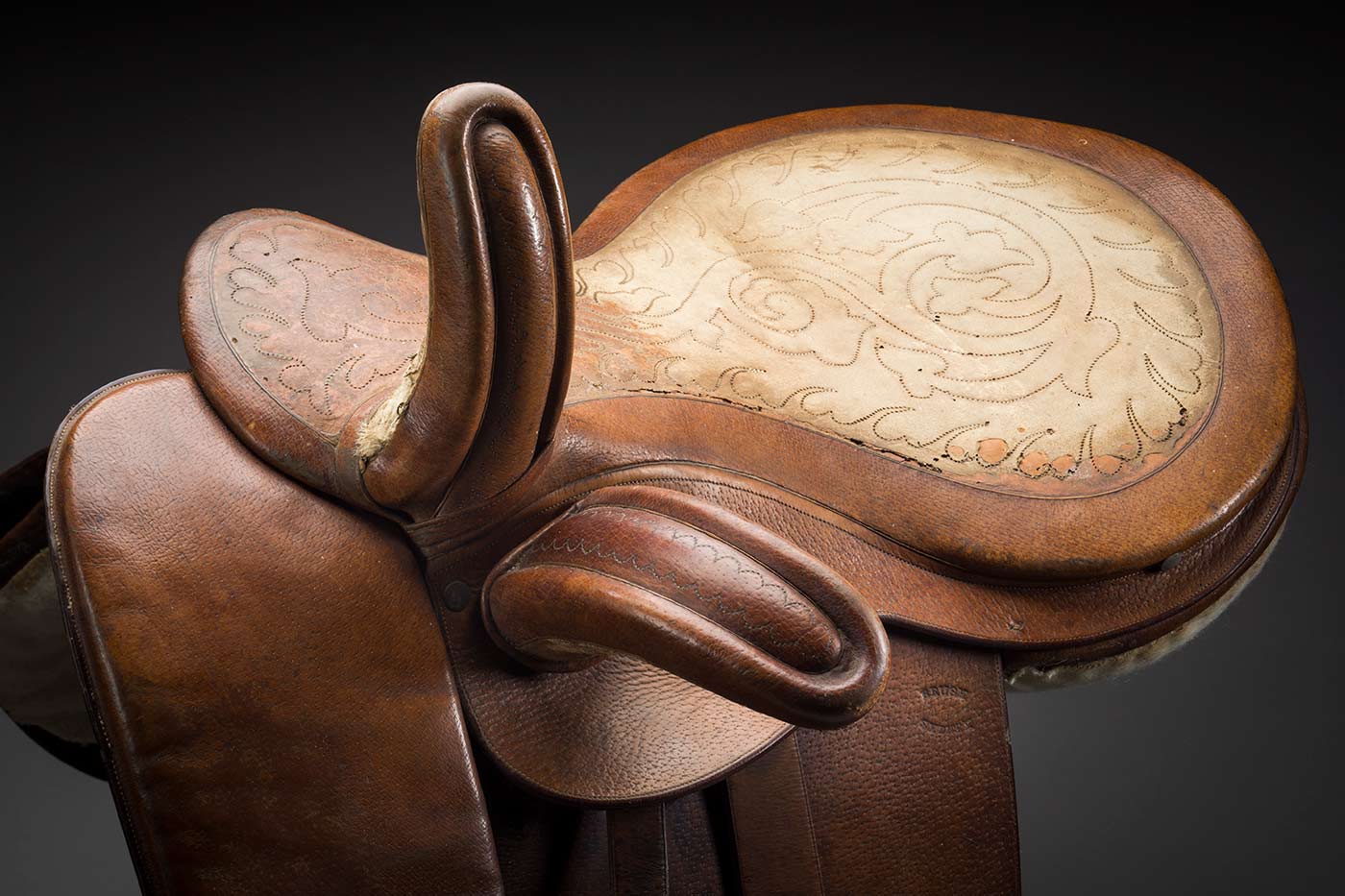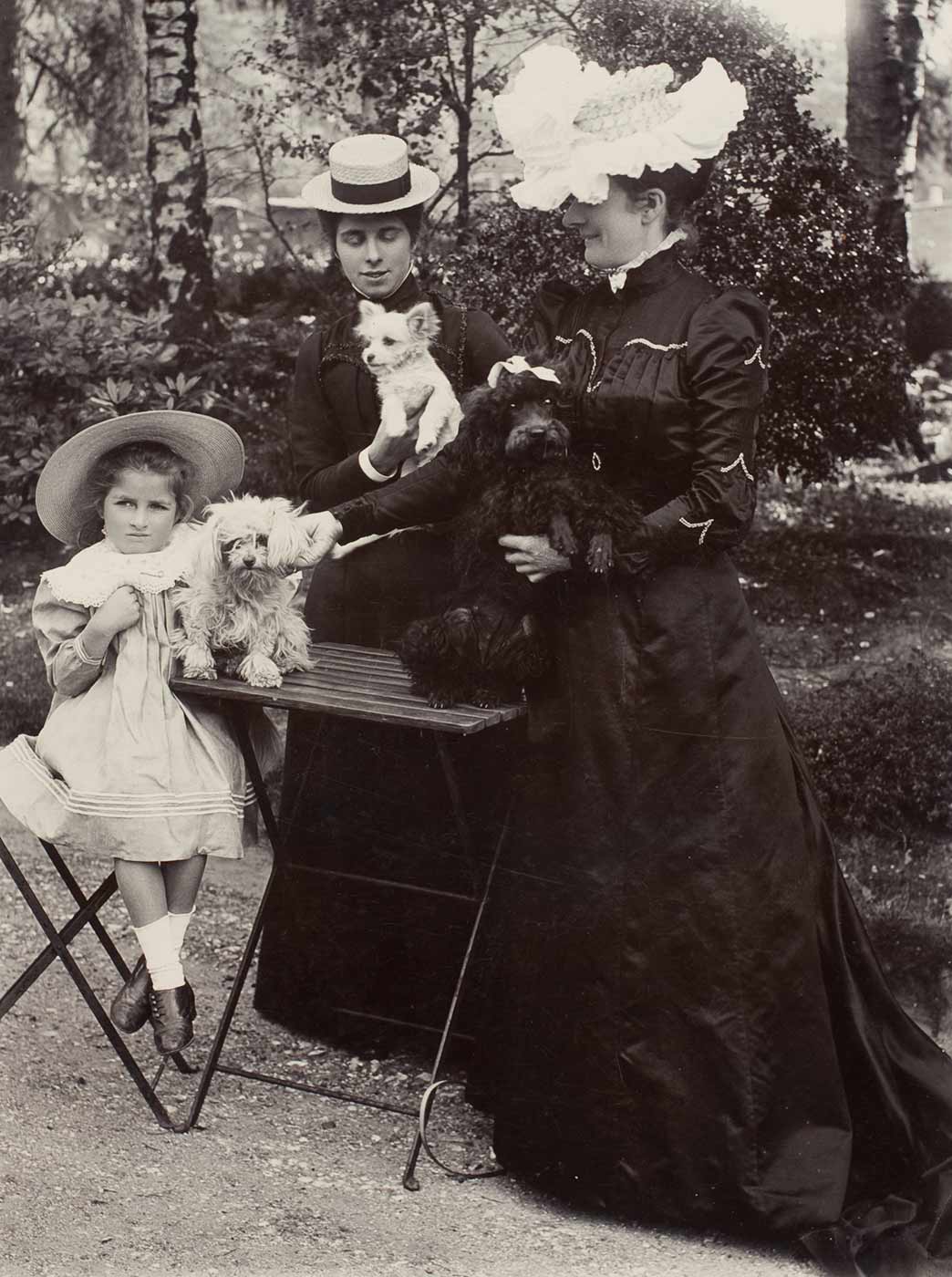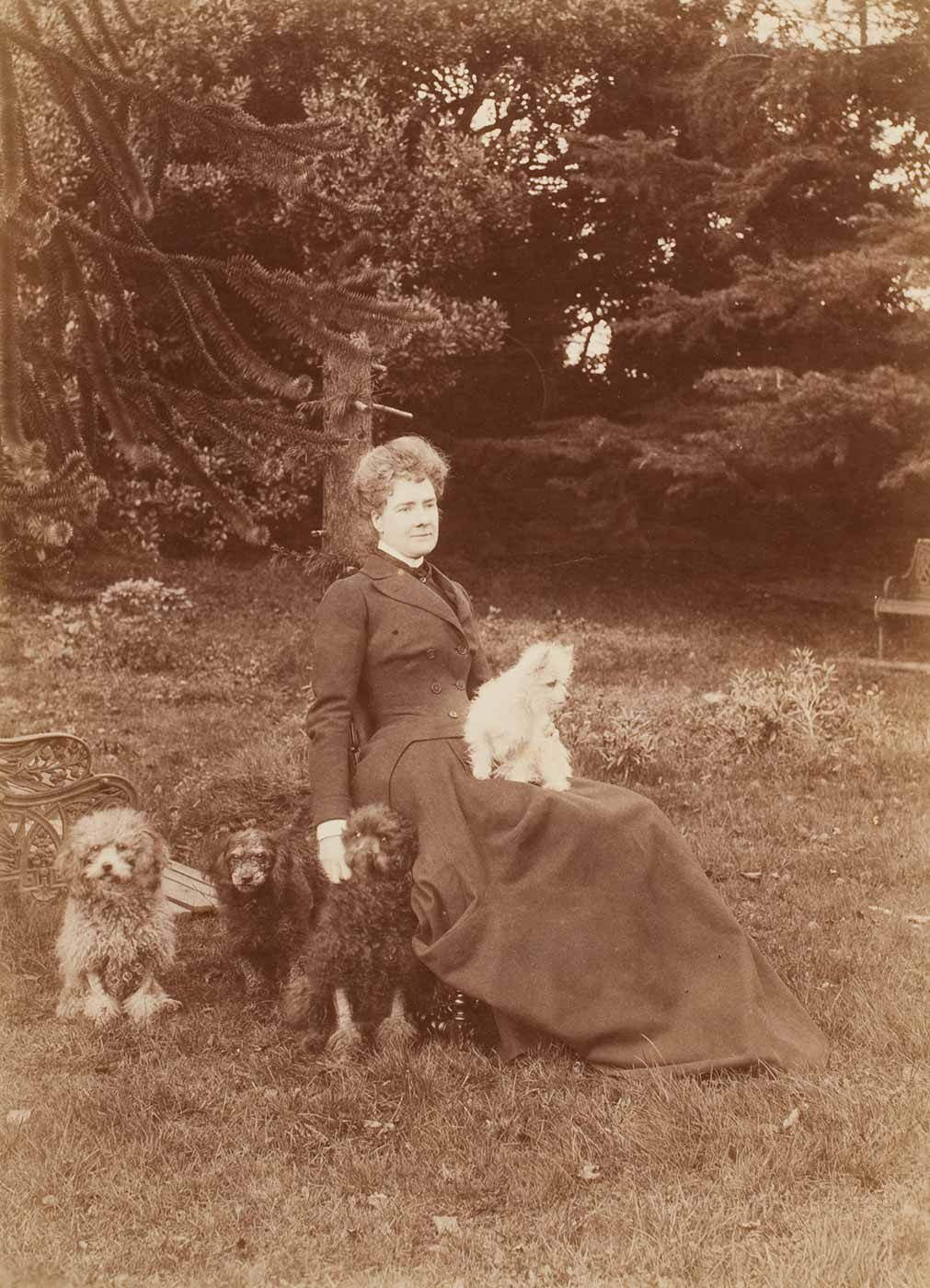Constance Mary Faithfull would have cut a fine figure as she rode side-saddle in her tailored riding habit and silk top hat during the mid-1890s. Horses were an integral part of life at Springfield station, where Constance grew up, and a quality riding habit was a wardrobe staple.
This beautifully constructed wool jacket and matching skirt was made by Sydney tailor William Rybak. It is a garment of paradoxes: feminine and masculine, restrictive yet liberating, and both fashionable and practical at a time that was a turning point in women’s fashion.
Victorian horsewoman
The habit’s colour and understated style were influenced by men’s fashion. Navy blue was an ideal choice of colour. It held its tint and, with glimpses of a starched white shirt at the collar and cuffs, Constance would have looked smart and elegant.
When on horseback Constance shunned the flounces, frills and embellishments she would have worn as part of her everyday wardrobe. The fitted jacket with long, slightly puffed sleeves would have hugged her waist and was worn with a short corset. Both garments were cut away at the front to allow for movement while riding.
The skirt begins small at the 22-inch waist and then flares out to the floor. Made for riding side-saddle, it has an asymmetrical design with a complex recess on one side for the rider’s right knee. The quality fabric and cut made sure that it lay flat and that both knees were covered when Constance galloped and jumped — a testament to Rybak’s skill.
The riding ensemble of a ‘well turned-out’ horsewoman of the 1890s included fashionable and appropriate accessories such as fine leather gloves and boots. The Springfield–Faithfull family collection also includes her black silk plush top hat made by Christys’ London for David Jones & Co and her riding crop featuring a silver dog’s head at the handle.
Sydney tailor William Rybak
William Rybak arrived from Russia in 1888 and by the 1890s had established himself as a ladies tailor and habit maker in George Street, Sydney. He regularly advertised his business in The Freeman’s Journal and the Sydney Morning Herald. In the Herald in June 1905, his patrons were informed that:
Monsieur Rybak has just returned from London and the Continent, bringing with him a stock of the latest English and Parisian novelties suitable for tailor-made costumes and riding habits. Monsieur Rybak need only add his name is sufficient guarantee for the patronage he is soliciting.
Only highly-skilled tailors could produce the complex skirt required for riding side-saddle. It had to curve neatly over the rider’s knees, lying flat even when her horse picked up its pace.
Constance probably visited Rybak’s shop several times for fittings. She would have tried on the skirt, perched on a wooden horse or possibly her own saddle while Rybak perfected the fit. A good riding habit was an expensive investment and was designed to last the rider for years.
Saddle of queens
By the 1890s more women were openly riding astride, but the ‘saddle of queens’ was still more popular.
The National Museum’s collection also includes Constance’s fine saddle made by John Brush & Co, Sydney. It features the leaping head (or lower pommel) that hooked over the rider’s right thigh securing her in the saddle.
Turning point in women’s fashion
Constance chose to wear breeches – also part of the collection – beneath her riding skirt, liberating her from layers of petticoats. While it would still be two decades before trousers were acceptable outer garments, more practical riding garb represented a turning point in women’s fashion.
By the end of the 19th century, emancipated women were experiencing increased mobility and clothing was changing so that women could participate in sport such as cycling, swimming, rowing and tennis. Constance may have looked the part of a genteel lady but, as a Victorian horsewoman, she was in fact paving the way for the 20th-century suit.
Constance Faithfull resided permanently in England from the 1890s and spent much of her adult life travelling and living in Europe and India.
In our collection
Explore more Springfield–Faithfull feature objects
Explore more on the Springfield–Faithfull family collection
